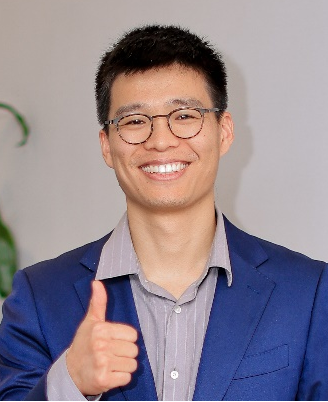Faculty A-Z

Quanquan Pang
Assistant Professor
Email address: qqpang0213@gmail.com
Group Website:http://pang-eetl-pku.com/
RESEARCH INTERESTS
In our group, we are interested in solving the most urgent and tough energy problems in front of us, and we tackle the problems from the perspective of electrochemistry. We aim to develop efficient, reliable and yet low-cost batteries, geared towards grid energy storage and electric transportation, both of which are critical sectors for a clean and renewable future. We also aim to extend our expertise to develop electrochemical solutions for solving the pressing questions pertaining to fossil fuel shortage, CO2 accumulation, innovation on resources recycling and exploitation. One thrust of our research is to develop new chemical systems and materials/chemical solutions (electrolytes, electrodes) towards our envisioned systems and applications, and the other is to understand the chemical/materials origin and mechanism of how it works or fails, by applying a range of characterization techniques developed by us and the field.
EDUCATION
2014–2017, Ph.D, University of Waterloo,Chemistry
2012–2014, M. S., University of Waterloo, Chemistry
2008–2012, B.S., Materials science and engineering of Hust
PROFESSIONAL EXPERIENCE
2020–Present, Assistant Professor, School of Materials Science and Engineering, Peking University
2017–2020, Postdoc, Massachusetts Institute of Technology, DMSE
2017, Postdoc, University of Waterloo, Chemistry
SELECTED PUBLICATIONS
1. Pang,Q.*, J. Meng, S. Gupta, X. Hong, C.Y. Kwok, J. Zhao, Y. Jin, L. Xu, O. Karahan, Z. Wang, S. Toll, L. Mai, L. F. Nazar, M. Balasubramanian, B. Narayanan, D.R. Sadoway* (2022) Fast-charging aluminium–chalcogen batteries resistant to dendritic shorting, Nature, 608, 704.
2. He, M., Zhu, L., Ye, G., An, Y., Hong, X., Ma, Y., Xiao, Z., Jia, Y., Pang, Q.* (2024) Angew. Chem. Intl. Ed. e202401051.
3. Liu, Y., An, Y., Zhu, J., Zhu, L., Li, X., Gao, P., He, G., Pang, Q.* (2024)Integrated energy storage and CO2 conversion using an aqueous battery with tamed asymmetric reactions. Nature Commun. 15, 977.
4. Meng, J., Hong, X., Xiao, Z., Xu, L., Zhu, L., Jia, Y., Liu, F., Mai, L., Pang, Q.*(2024) Rapid-charging aluminium-sulfur batteries operated at 85° C with a quaternary molten salt electrolyte. Nature Commun. 15, 595.
5. Liu, Y., Zhu, L., Wang, E., An, Y., Liu, Y., Shen, K., He, M., Jia, Y., Ye, G., Xiao, Z., Li, Y., Pang, Q.* (2023) Electrolyte engineering with tamed electrode interphases for high‐voltage sodium‐ion batteries. Adv. Mater. 2310051.
6. Liu, Y., Xu, L., Yu, Y., He, M., Zhang, H., Tang, Y., Xiong, F., Gao, S., Li, A., Wang, J., Xu, S., Aurbach, D., Zou, R., Pang, Q.* (2023) Stabilized Li-S batteries with anti-solvent-tamed quasi-solid-state reaction. Joule. 7, 2074.
7. Meng, J., Yao, X., Hong, X., Zhu, L., Xiao, Z., Jia, Y., Liu, F., Song, H., Zhao, Y., Pang, Q.*(2023) A solution-to-solid conversion chemistry enables ultrafast-charging and long-lived molten salt aluminium batteries. Nature Commun., 14, 3909.
8. Liu, Y., Elias, Y., Meng, J., Aurbach, D., Zou, R., Xia, D., Pang, Q*. (2021) Electrolyte solutions design for lithium-sulfur batteries. Joule, 5, 2323.
9. Pang, Q., Shyamsunder, A., Narayanan, B., Kwok, C.Y., Curtiss, L.A., Nazar L.F.* (2018)Tuning the electrolyte network structure to invoke quasi-solid state sulfur conversion and suppress lithium dendrite formation in Li–S batteries. Nature Energy, 3, 783.
10. Pang, Q.†,Liang, X.†, Kwok, C. Y.†, Nazar, L. F. * (2016) Advances in lithium–sulfur batteries based on multifunctional cathodes and electrolytes. Nature Energy, 1, 16132.
11. Pang, Q., Kundu, D., Cuisinier, M., Nazar, L. F.* (2014) Surface-enhanced redox chemistry of polysulphides on a metallic and polar host for lithium-sulphur batteries. Nature Commun., 5, 4759.

